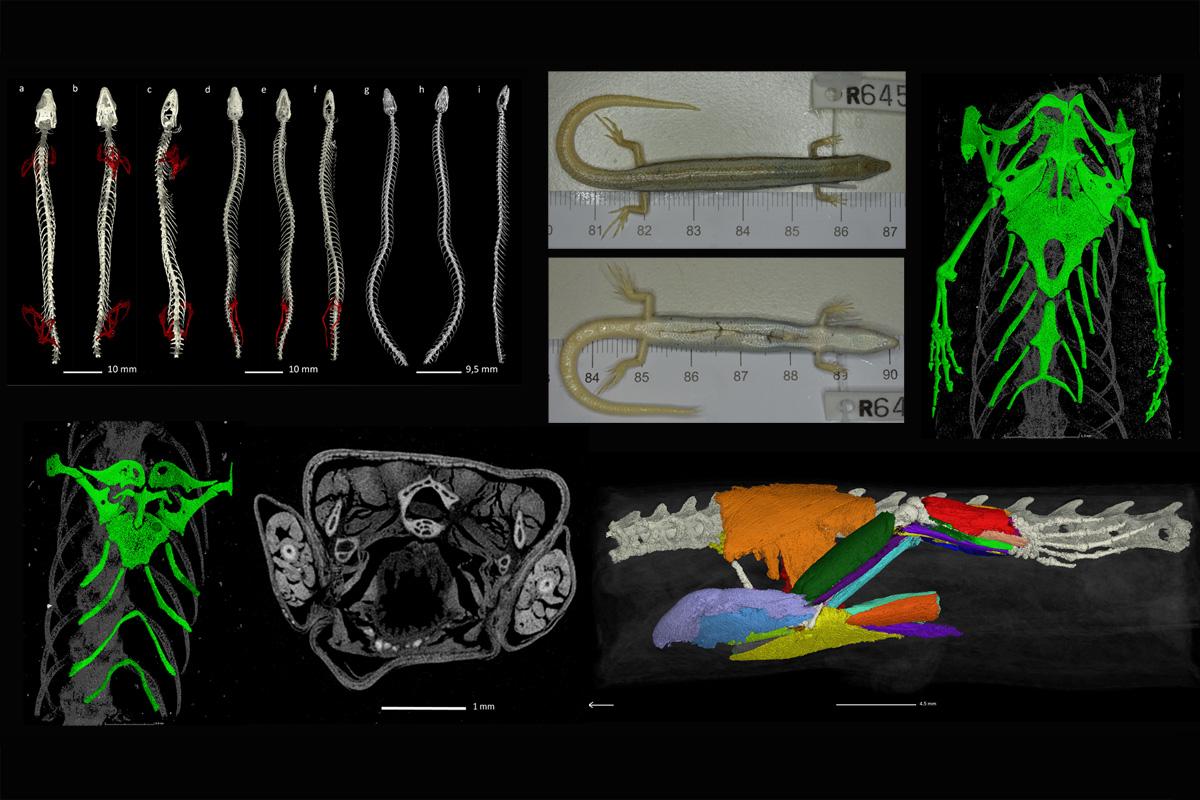Questions to be investigated
The work is about limb reduction and the elongation of the body axis as well as the accompanied diversifications of the musculoskeletal system in Australian lizards of the genus Lerista. Special attention is paid to the muscle structures of the limbs and the pectoral and pelvic regions, because these areas are subject to the most severe changes during limb reduction. The question is whether the reduction of limb bones also reduces the attached bone structures of the pectoral and pelvic area and whether the muscle reduction in the forelimbs and hindlimbs follows the same pattern.
Methodology
We use modern examination methods such as dice-CT and X-ray tomography (μ-CT technique) to produce high-resolution three-dimensional volume data of the examination specimens, which reproduce muscle structures down to the smallest detail and thus represent a new, noninvasive technique for analyzing musculoskeletal structures. In addition, statistical analysis of the data collected reveals whether the muscle reductions in different parts of the body, such as the limbs, shoulders and pelvis, correlate equally with an extension of the body axis.
Partners
Dr. Mark Hutchinson, South Australian Museum (SAM) Adelaide
Funding
Elsa-Neumann-Stipendium des Landes Berlin
Duration
01.04.2017 - 01.04.2020
